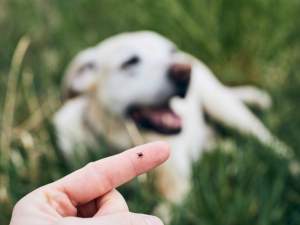 With temperatures and grass growing, so does the risk of your pets getting ticks and fleas. These little pests carry and transmit diseases to your pets or cause other conditions like anemia or infection, which can lead to serious complications or death if left untreated. By regularly using preventative treatments, you can protect your furry family members and anyone else in your home.
With temperatures and grass growing, so does the risk of your pets getting ticks and fleas. These little pests carry and transmit diseases to your pets or cause other conditions like anemia or infection, which can lead to serious complications or death if left untreated. By regularly using preventative treatments, you can protect your furry family members and anyone else in your home.
Finding the right preventative treatment for your pet
There are many different types of tick and flea protection like topical, oral/chewables, sprays and collars. Whatever method you use, it’s critical to make sure the product is correct for your pet’s species, age and weight. Other considerations include how often your pet gets wet or if they have a sensitive stomach.
Warning signs of ticks and fleas
Warning signs that your dog may have ticks or fleas are signs of skin irritation like redness, flaky skin, scabs and hair loss. If your dog is scratching, biting or chewing at their skin more than usual, you should check to see if they’ve picked up any strays.
For fleas, you can use a flea comb to check for adult fleas, eggs and flea dirt. Fleas prefer the head and neck area of cats, and the rump and tail area of dogs. If your pet does get fleas, you can give them a bath in warm water and dish soap or flea shampoo and regularly check them until you’re sure they’re free of fleas. Vacuuming more frequently can also ensure that there aren’t fleas around your home that will make their way back to you and your pets.
Ticks vary in size more than fleas and like to attach in dark and hidden areas like ears, armpits, groins, tails and between toes. Ticks can be brown, black or tan and have eight legs. If you find a tick on your dog, you should wear gloves and use clean tweezers or tick remover to remove it as soon as possible. You should grab the tick as close to the skin as possible and pull it out slowly, careful not to squeeze the tick’s body. After removal, store the tick in a sealed container for your veterinarian. Keep a close eye on your pet for the next few days as they can still get sick from ticks after removal. Visit your vet immediately if your pet is lethargic, has a fever, or is acting differently than usual.
